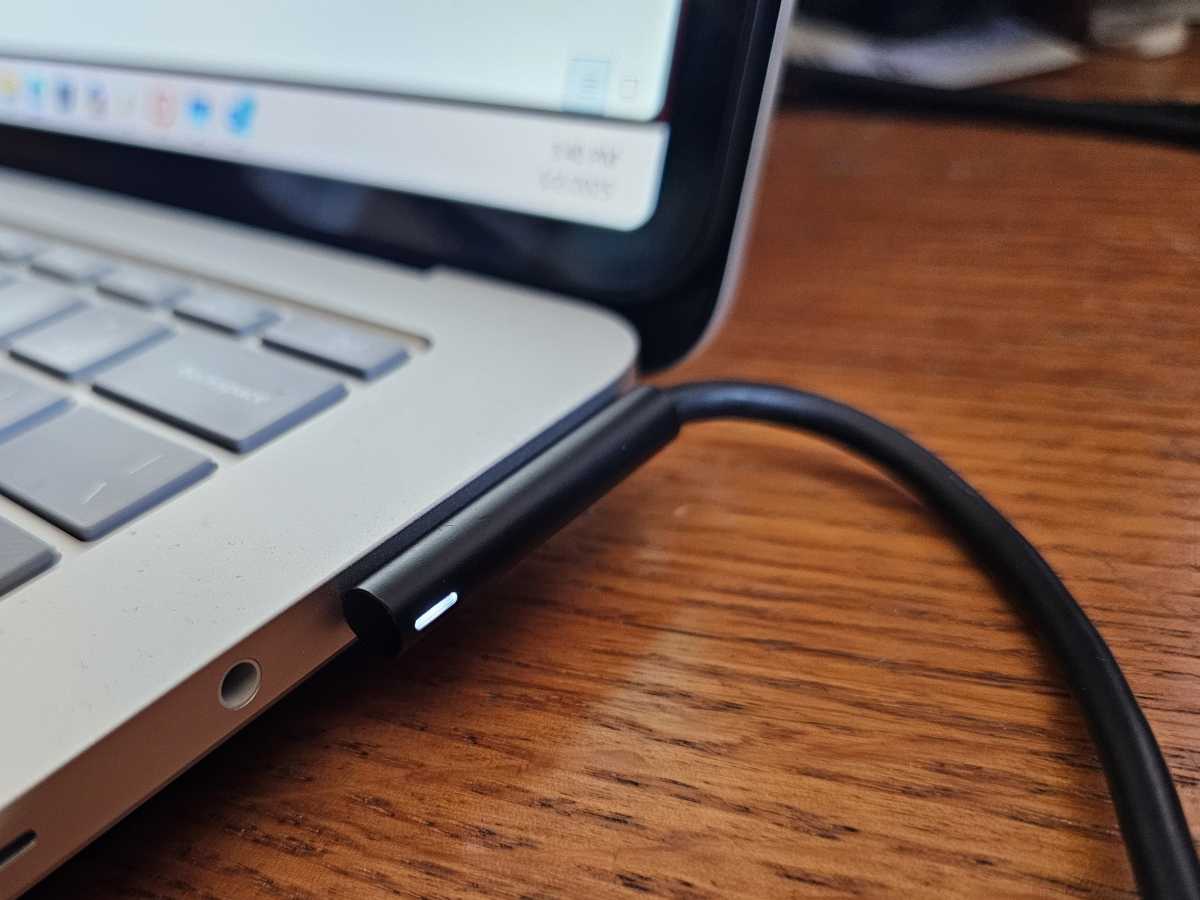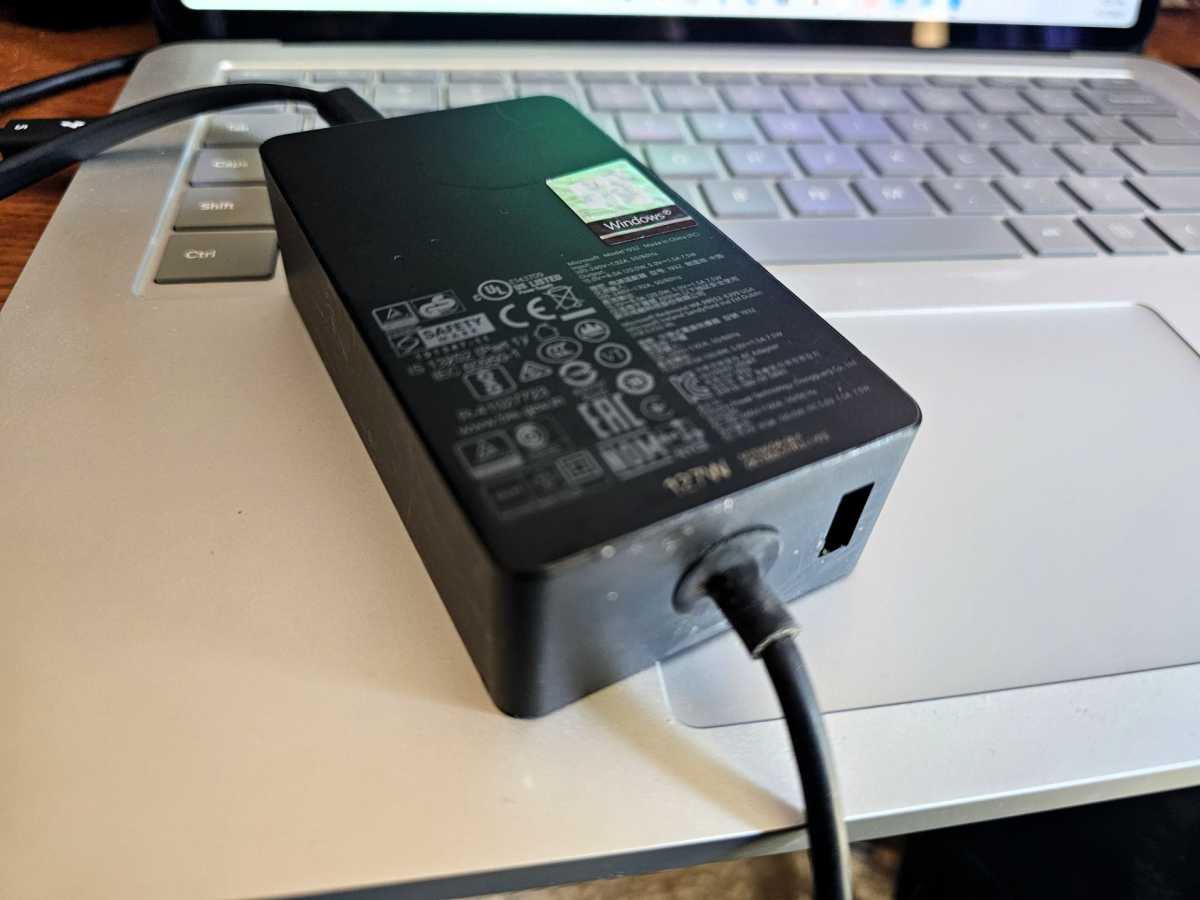Is it way too nerdy to feel nostalgia for a laptop charger? Not for me.
Microsoft latest Surface 13-inch Surface Laptop and 12-inch Surface Pro have finally done away with the iconic Surface Connect connector in favor of USB-C. If you’ve never used a Surface, that means little; if you have, it’s a big part of what made a Surface a Surface.
The Surface Connect debuted about a decade ago, with the Surface Pro 3 — which, in keeping with Microsoft’s rule of threes, was the first Microsoft Surface tablet that really nailed what a Windows tablet could do. I wrote then that the new charger broke compatibility with previous chargers, and that’s true. But it did two things: offered a convenient, safe way to charge your Microsoft laptop or tablet, and kicked off an 11-year run where one Surface charger ruled them all.
There’s a lot made about Apple’s MagSafe charger, and rightly so. MagSafe debuted with the MacBook Pro, and its magnetic connector meant that if you kicked the power cable by mistake, you wouldn’t yank the laptop off its desk. Surface Connect offered the same advantage, though a few years later.

Mark Hachman / Foundry
Even better, it meant that consumers didn’t have to worry about losing a Surface charger. For years, charger compatibility was one of the best attributes of the IBM/Lenovo ThinkPad ecosystem: if you had one charger, chances are you’d be able to use it again and again on successive purchases. Over time, loyal customers amassed multiple chargers, one for home and on the road.
I only ever had one Surface charger wear out, and only the Surface Book 2’s infamous power problem made me question Microsoft’s decision. In recent years Microsoft moved to lower-power 45W and 65W chargers, which meant that older, more powerful chargers tended to work just fine as backups.
The one feature that Microsoft never really updated was the hidden USB-A port inside the Surface’s power brick, which served as a simplistic way to power early smartphones but later became outdated. Microsoft could have updated it with a more sophisticated USB-C connection, but probably wanted to sell more Surface Docks instead.
Ironically, the 2023 Surface Thunderbolt Dock was the first time Microsoft ditched the Surface Connect port. The world was moving to Thunderbolt, and regulatory bodies like the European Union were demanding a move away from proprietary standards and to universal ones like USB-C. Thunderbolt, which uses the USB-C connector, became the chosen standard instead.
In the intervening years, you could charge a Surface either with its own charger or over USB-C or Thunderbolt, which meant that it offered flexibility many other laptops couldn’t.

Mark Hachman / Foundry
But there’s another thing that brings it a touch of ennui: like Thunderbolt — and before Thunderbolt became popular — Surface Connect was specifically designed to move both power and data. We live in a world where Microsoft never introduced an Xbox gaming PC, and where it never launched a Surface laptop with an external Xbox-branded eGPU that could have turned the business day’s business PC into that evening’s gaming PC. If only. Microsoft never even bothered to let a third-party company accomplish what it was itself unwilling to do.
Now, the only reason I’ll keep old Surface chargers around will be to power the old Surface devices that still hang around my office. Over time, however, more and more USB-C chargers will replace them, especially as gaming-optimized USB-C chargers emerge.
I don’t know if the Surface Connect charger deserves to be buried in the graveyard of dead Microsoft hardware, but I’ll miss it anyway. Farewell, old friend.




